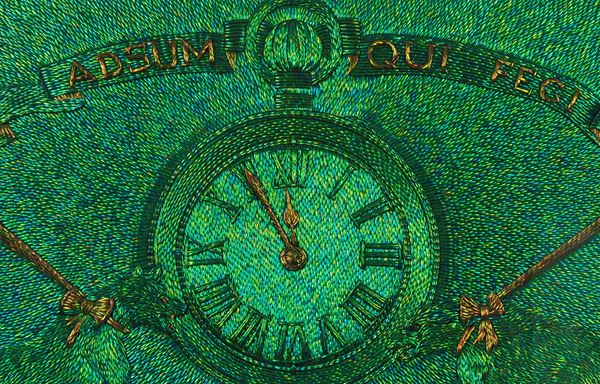Jan Fabre © (1958)
Adsum qui feci (I, here before you, am the guilty party) dalla serie 'Vanitas vanitatum, omnia vanitas', 2016
Provenance:
Deweer Gallery, Otegem, Belgium, as per certificate;
Private collection, Belgium
Exhibitions:
Belgian Thoughts, Märkisches Museum, Witten, Germany, from 12 October 2019 to 26 January 2020;
Jan Fabre - Kinight of Despair / Warrior of Beauty, State Hermitage Museum, St. Petersburg, Russia, 2016;
Jan Fabre - Vanitas Vanitatum, Omnia Vanitas, Deweer Gallery, Otegem, Belgium, 2016
Literature:
Jan Fabre - Knight of Despair | Warrior of Beauty, The State Hermitage Museum, St. Petersburg, Russia, 2016, pp. 109 and 123
Photograph of the artwork authenticated by the artist on May 20th 2017
-
Born in Antwerp in 1958, Jan Fabre is undoubtedly one of the most innovative and eclectic contemporary artists. Choreographer, director, set designer but also author of radical sculptures, drawings, films, installations and performances he has produced starting from the seventies.
Visual artist, theatrical artist and author, he uses his works to speculate in a noisy and tangible way on the life and death, physical and social transformations, as well as the cruel and intelligent imagination that is present in both animals and humans.
Influenced by the research of the entomologist Jean-Henri Fabre (1823-1915), from a very young age he was fascinated from the world of insects and other creatures. In fact, from a technical point of view, the Fabre's mosaic is made with thousands of iridescent wings of the green jewel beetle, which give the work an unique aesthetic. "Adsum qui feci" is a work created by the artist for the important exhibition entitled the Knight of Despair / Warrior of Beauty held in 2016-2017 at the Hermitage in St. Petersburg. In this important work of the series "Vanitas Vanitatum, Omnia Vanitas" ("Vanity of Vanities, All is Vanity") vanity and fidelity are the two most important themes; common themes - as the artist likes to remember - in Flemish art of the sixteenth and 17th century, as well as in the work of the Antwerp baroque master Jacob Jordaens. Concepts rich in meaning such as vanity and fidelity are represented in artistic iconography through numerous symbols, in this work is evident that the skull, an ornament for the ear and the compass symbolize vanity and transience.
The dog, on the other hand, symbolizes fidelity, loyalty, devotion, and even submission.
In combination with a plethora of images depicting uninhibited and an instinctive behavior of the dogs, it becomes clear that the dog as a symbol also represents everything that humans consider below his dignity. The vanity motif is a recurring theme also in Jan Fabre's visual and theatrical work: through his compositional combinations of symbols of vanity and fidelity, he describes his own vision of the transience of earthly life in a very penetrating way: man must commit himself to ideals that transcend the storm, like Beauty. Everything else is irrelevant.








